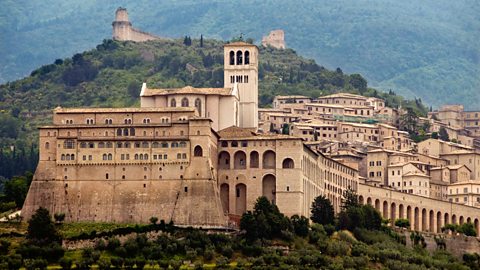Form and structure

The poem is separated into three distinct stanzas which describe different scenes. In the first, the speaker introduces us to the disabled beggar outside the basilica.
The second focuses on the priest who is acting as a tour guide while the third examines the tourists reaction to the disabled beggar. The portrait of this figure of pity, which opens and closes the poem, is the most abiding image for the reader.
Although MacCaig is entirely sympathetic with the wretched poverty endured by the beggar, the terms he uses to describe his disabilities are dehuminising by today's standards.
The poem is written in free verse using irregular stanzas to create a conversational, accessible style. The general language is deliberately unsophisticated and even at times monosyllabic. This again lends itself to the accessibility of the poem and is typical of MacCaig’s work.